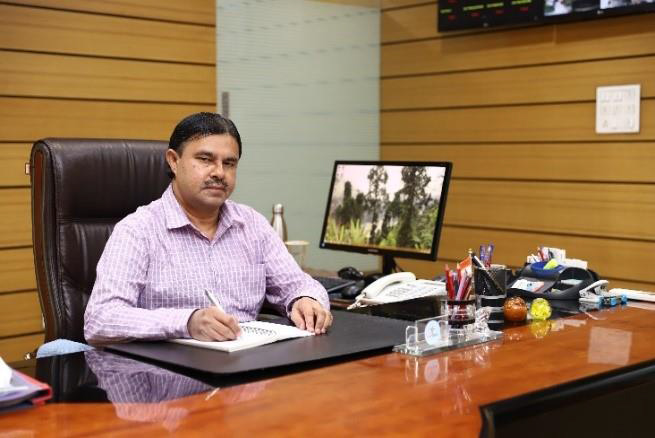ISRO Designing Docking Ports for Indian Space Station as per International Standards
By R. Anil Kumar
-
Prime Minister Narendra Modi has set an ambitious goal for ISRO — India’s own space station, up and running by 2035. ISRO has already started developing technologies for the space station
-
The space station to be placed in a low earth orbit. The Bharatiya Antariksh Station could accommodate 2 to 4 astronauts in space
-
Only Russia, the US and China have sent space stations in orbit. India may become the fourth country to have an independent space station in space

Bengaluru, May 14. As part of India’s ambitious plans in space, the Indian Space Research Organisation (ISRO) has started work on setting up the country’s maiden space station at the earliest. ISRO chief S Somanath says the first modules of the space station may be launched in the next few years.
Work is on in full swing and the plan is to use India’s heaviest rocket, Bahubali, or Launch Vehicle Mark 3(LVM 3) to hoist the components into an orbit of about 400 km from earth.
India hopes to do microgravity experiments in space, including astrobiology experiments, and use the platform to explore the possibility of habitat on the surface of the moon.
According to initial estimates, the space station could weigh about 20 tonnes. It would be made of solid structures, but inflatable modules could be added. The final version could well go to about 400 tonnes.
One end of the space station will be a docking port for the crew module and rocket that will ferry astronauts. India is developing a 21st century special docking port for this and it may well be compatible with the docking port of International Space Station.

Once completed, the Indian space station can have four different modules and at least four pairs of solar panels. It will also have a permanently docked safety crew module escape system for use in case of emergencies.
The main module will be equipped with an India-made Environmental Life Support and Control System and it will help generate oxygen and remove carbon dioxide and keep relative humidity at optimum levels.
As per the current drawings, in the first phase, there will be two large solar panels that would generate the power required to run the Bharatiya Antariksh Station.
As part of the space vision 2047, Prime Minister Modi directed that India should now aim for ambitious goals, including setting up the space station and sending the first Indian to the Moon by 2040.
ISRO has plans to assemble a modular space station in Earth orbit by 2035. This space station will demonstrate ISRO’s capabilities of a sustained human presence in Earth orbit, paving the way for landing crew on the Moon.

During a lecture on National Technology Day on 11 May, 2024, director of ISRO’s Space Applications Centre (SAC), Nilesh Desai provided additional details on the Bharatiya Antariksh Station (BAS), or the Indian Space Station.
ISRO plans to assemble the space station in Earth orbit, through a series of missions. The first module will be launched by 2028, followed by other modules which will be integrated in space. The Indian Space Station is expected to be completed by 2035.
India will demonstrate the capability of sustained human presence in space with the BAS, with astronauts remaining on board for between three and six months. Resupply missions are planned for about once every three months. The space station will be assembled in Earth orbit by docking multiple modules together.
International Docking Ports
The BAS will have docking ports according to international standards, that will allow for international cooperation and collaborations with the space agencies of other spacefaring nations.
The International Space Station (ISS) uses the International Docking System Standard (IDSS) for its ports, which supports crew rescue operations and provides a standard docking interface.
BAS will be used as a staging ground for missions to the Moon and beyond. The BAS will also enable and promote microgravity research, including in the fields of biomedical and material sciences.
The BAS will also provide a platform for microgravity manufacturing. ISRO expects large scale participation from academia and industry partners for the BAS.
Space Station to be Assembled in Earth Orbit
Desai said, “It will be built in space, which is like building a building in space, rather than Earth, and then launching it. Module by module will be launched, so by 2028 first module will go, followed by other modules and they will get integrated in space itself. Many of the technologies we don’t have, so we will need support from various other private sector, and start-ups can play a role into doing various activities, small or big”.





